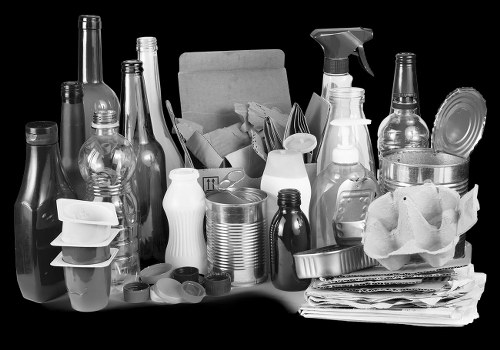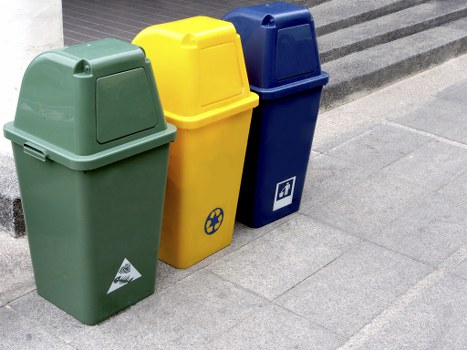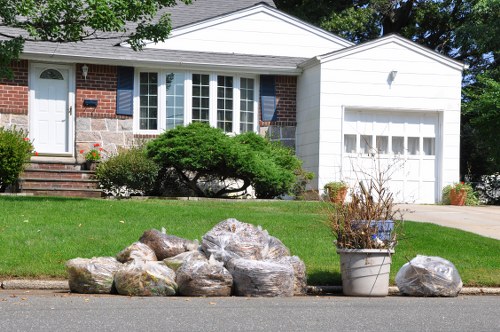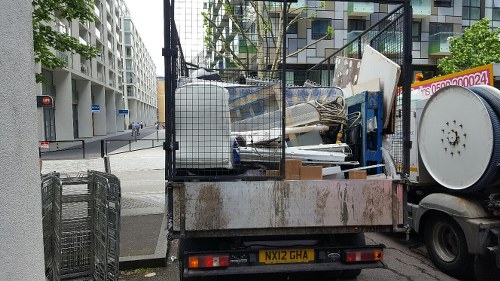Efficient Waste Removal in Office Clearance
Understanding Office Clearance

Office clearance is a critical process that involves the efficient removal and management of waste generated in a professional workspace. Whether it's moving to a new location, downsizing, or simply decluttering, proper waste removal ensures a smooth transition and maintains a healthy work environment.
The significance of waste removal in office clearance cannot be overstated. It not only helps in maintaining cleanliness but also plays a vital role in sustainability and environmental conservation.
Effective office clearance requires meticulous planning and execution, considering factors such as the type of waste, volume, and disposal regulations.
Types of Waste in Office Environments

Offices generate various types of waste, each requiring specific handling and disposal methods. Understanding these categories is essential for effective waste removal.
- Paper Waste: Includes old documents, reports, and general paper scraps.
- Electronic Waste: Encompasses outdated electronics like computers, printers, and other office equipment.
- Plastic and Metal Waste: Consists of containers, packaging materials, and office supplies.
- Chemical Waste: Involves cleaning agents and other hazardous materials used in office maintenance.
Proper categorization ensures that waste is disposed of responsibly, minimizing environmental impact.
Benefits of Professional Waste Removal Services

Hiring professional waste removal services offers numerous advantages for businesses undergoing office clearance.
- Efficiency: Professionals are trained to handle waste quickly and effectively, reducing downtime.
- Compliance: Ensures adherence to local regulations and environmental laws, avoiding potential fines.
- Cost-Effective: Reduces the overall cost by streamlining the disposal process and minimizing waste.
- Safety: Proper handling of hazardous materials prevents accidents and health risks.
These benefits highlight why outsourcing waste removal can be a smart decision for businesses.
Steps Involved in Office Clearance Waste Removal

Understanding the step-by-step process of waste removal can help businesses prepare and execute their office clearance efficiently.
1. Assessment and Planning
The initial phase involves assessing the types and volume of waste generated. This information is crucial for creating a tailored waste removal plan.
2. Categorization of Waste
Segregating waste into different categories ensures proper handling and disposal, adhering to environmental standards.
3. Collection and Transportation
Once categorized, waste is collected and transported to designated disposal or recycling facilities by professionals.
4. Recycling and Disposal
Recyclable materials are processed accordingly, while non-recyclable waste is disposed of following legal guidelines.
5. Final Cleanup
The final step involves thorough cleaning of the office space, ensuring it's ready for its next phase, whether it's moving or continued operations.
Environmental Impact of Effective Waste Removal

Proper waste removal during office clearance significantly contributes to environmental sustainability.
By recycling paper, electronics, and other materials, businesses reduce their carbon footprint and conserve natural resources. Additionally, responsible disposal of hazardous waste prevents soil and water contamination, safeguarding ecosystems.
Moreover, sustainable waste management practices enhance a company's reputation, showcasing its commitment to environmental stewardship.
Choosing the Right Waste Removal Service
Selecting a reliable waste removal service is crucial for successful office clearance. Here are key factors to consider:
- Experience and Expertise: Ensure the company has a proven track record in handling office waste.
- Comprehensive Services: Look for services that cover all aspects of waste removal, from collection to disposal.
- Environmental Compliance: The service provider should adhere to all environmental laws and regulations.
- Transparent Pricing: Clear and upfront pricing helps avoid unexpected costs.
- Customer Support: Responsive and supportive customer service enhances the overall experience.
Taking these factors into account will help businesses choose a partner that aligns with their needs and values.
Cost Considerations in Waste Removal
Understanding the cost structure of professional waste removal services is essential for budgeting office clearance projects.
Costs typically depend on factors such as the volume of waste, type of materials, distance to disposal sites, and specific service requirements.
It's advisable to obtain multiple quotes and compare services to ensure the best value for money without compromising on quality.
Implementing a Sustainable Waste Management Strategy
Beyond office clearance, businesses can adopt sustainable waste management practices to minimize future waste generation.
- Digital Transformation: Reducing paper use by transitioning to digital documents.
- Recycling Programs: Establishing in-office recycling stations for easy waste segregation.
- Supplier Partnerships: Collaborating with eco-friendly suppliers to minimize packaging waste.
- Employee Training: Educating staff on sustainable practices and proper waste disposal.
Implementing these strategies fosters a culture of sustainability and reduces the overall environmental impact.
Challenges in Office Clearance Waste Removal
Despite the benefits, office clearance waste removal comes with its own set of challenges.
1. Volume of Waste
Large offices produce significant amounts of waste, requiring efficient handling and disposal methods.
2. Hazardous Materials
Properly disposing of hazardous materials, such as chemicals and electronics, necessitates specialized services.
3. Regulatory Compliance
Adhering to local and national waste disposal regulations can be complex and time-consuming.
4. Time Constraints
Office clearances often need to be completed within tight schedules, adding pressure to waste removal operations.
5. Cost Management
Balancing effective waste removal with budget limitations requires careful planning and resource allocation.
Technological Innovations in Waste Removal
Advancements in technology are transforming the waste removal landscape, making office clearance more efficient and sustainable.
Innovations such as automated sorting systems, real-time tracking of waste disposal, and the use of eco-friendly materials are enhancing the effectiveness of waste management services.
Additionally, data analytics helps in optimizing waste removal processes, reducing costs, and improving environmental outcomes.
Case Studies: Successful Office Clearance Waste Removal
Examining successful office clearance projects can provide valuable insights into best practices and effective strategies.
Case Study 1: Tech Startup Relocation
A rapidly growing tech startup needed to relocate its office within a month. By partnering with a professional waste removal service, they efficiently managed the disposal of outdated electronics and paper waste, ensuring minimal disruption to their operations.
Case Study 2: Corporate Downsizing
A large corporation underwent downsizing, leading to significant office clearance needs. The waste removal service implemented a comprehensive plan that included recycling programs and secure disposal of sensitive documents, maintaining the company's reputation and compliance.
Future Trends in Waste Removal for Offices
The future of office waste removal is poised for significant transformations driven by sustainability and technological advancements.
- Increased Recycling Efforts: Enhanced recycling technologies will further reduce the environmental impact of office waste.
- Green Certifications: Companies will seek waste removal services that offer green certifications, demonstrating their commitment to sustainability.
- Smart Waste Management: Integration of IoT devices and AI will optimize waste collection and disposal processes.
- Zero-Waste Goals: Businesses will aim for zero-waste offices, striving to eliminate all forms of waste through innovative practices.
Staying ahead of these trends will ensure that businesses can manage their waste effectively while contributing to a sustainable future.
Conclusion
Waste removal is a fundamental aspect of office clearance, impacting operational efficiency, environmental sustainability, and compliance with regulations. By adopting professional waste removal services, businesses can ensure a smooth and responsible transition during office clearance.
Implementing effective waste management strategies not only benefits the environment but also enhances the company's reputation and operational efficiency.
Contact us today to streamline your office clearance process and contribute to a sustainable future.